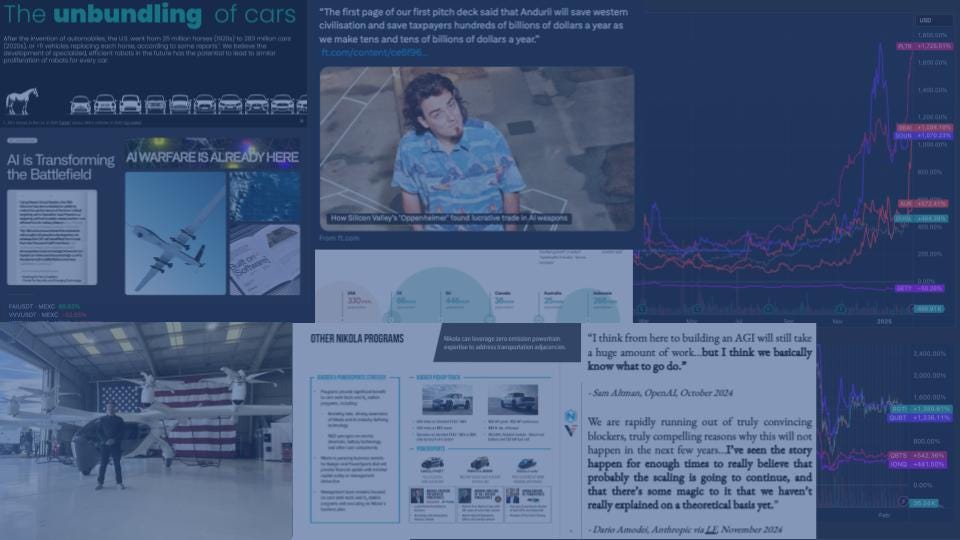The Evolution of Perception Markets: Schelling Point Companies, Reality Ratios, & Narrative Receptacles
As narratives increase in value, a new generation of companies build on the power of perception, while private & public markets race to fill every speculative void
The full post with footnotes can and should be read on my website. A short preview is below.
The best startups in emerging categories often act as Narrative Schelling Points. We can call these, Schelling Point Companies.1
Schelling Point Companies do not merely sell a product or a service, but uniquely also sell an idealogy. They often are built from the beginning with less clear mid-term product views but a clear goal to serve as a focal point, or a Schelling point, of their respective categories and idea space. Their go-to-market (GTM) strategy and product are less solidified, and more importantly are vessels to dominate the narrative and use that as a mechanism for short to mid-term accumulation of capital, talent, and brand value. This all then hopefully feeds into a loop of faster and larger scale customer willingness-to-try and a better navigation of the idea maze as the category develops. Schelling Point companies inherently aim to create dominance and trust via brand in conjunction with a product, but not purely via product.
While many could say these types of companies have existed for long periods of time2, there is a difference between building a defining company as a result of execution versus a company built around the idea of being a Schelling Point for a new technological inflection point or societal shift.3
This dynamic is especially relevant in emerging categories where the market and technology potential is yet to be defined. Schelling Point Companies attempt to own the novel category (that they help popularize and at times, create) and build an Idea Moat; a mechanism we talk a lot about at Compound that results in a dynamic where people who speak about a given technological or societal shift must mention a given company, else sounding uninformed or intentionally avoidant.
Schelling Point companies shape the way users, investors, and talent perceive the category and set the standards and expectations that future entrants will have to disprove and/or exceed in order to overtake the original company narratively. They are often first movers in a given area and have more horizontal/full-stack ambitions than most startups.
Founders of Schelling Point companies are very high conviction that something under-appreciated will happen but want to build an organization that can be malleable because of mid-term uncertainty into how to precisely make it happen through sequencing. Typically these visionary founders/CEOs are best paired with operational excellence in the executive team as the companies scale in order to push on the advantages of narrative while the COO/President/Co-CEO/etc. maintains operational discipline.
Examples of these companies include Palantir in government tech, Anduril in defense tech, OpenAI in frontier AI, Ginkgo Bioworks in Synbio, Recursion in computational bio, Bitcoin in crypto, Physical Intelligence in robotics, and more. Once these companies awaken talent and capital markets to an opportunity, they then see a ripple of fast followers4 and a birth of adjacent opportunities that were slightly out of scope for the company.5
Fail States for Schelling Point Companies
Being a Schelling Point company creates an incredibly powerful position on the upswing for all the reasons mentioned, but also can lead to false feelings of momentum that can either come from investor interest being mistaken for progress, customer churn being under-appreciated/hidden by lowered difficulty in customer acquisition, as well as talent flows masking broader cultural/team problems. These are all versions of crises of overconfidence..
While the blast radius of a failure of a company typically is contained, when a Schelling Point company collapses, it can often effectively destroy a category for years to come…



